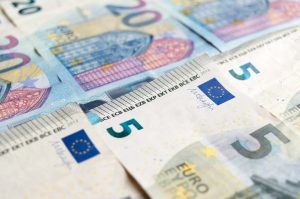Forex trading is a popular way of making money through trading currencies. The forex market is the largest and most liquid financial market in the world, with a daily turnover of over $5 trillion. As a forex trader, it is essential to understand how to determine trade cost in forex.
Forex trading involves buying and selling currencies in pairs. Each currency pair has a bid price and an ask price. The bid price is the price at which you can sell the currency, while the ask price is the price at which you can buy the currency. The difference between the bid price and the ask price is known as the spread. The spread is the main cost of forex trading.
To determine the trade cost in forex, you need to consider the following factors:
1. Spread
As mentioned earlier, the spread is the difference between the bid price and the ask price. The spread is the main cost of forex trading, and it varies from one currency pair to another. Some currency pairs have tight spreads, while others have wider spreads. The spread is usually expressed in pips, which is the smallest unit of measurement in forex trading.
2. Lot Size
Lot size refers to the amount of currency being traded. In forex trading, lot sizes are standardized, and they vary depending on the broker. The standard lot size is 100,000 units of the base currency. However, brokers offer different lot sizes, including mini-lots (10,000 units) and micro-lots (1,000 units). The lot size affects the trade cost in forex because the larger the lot size, the higher the spread.
3. Leverage
Leverage is a tool that allows traders to trade with more money than they have in their account. It magnifies profits, but it also magnifies losses. Leverage is expressed as a ratio, such as 1:100 or 1:500. This means that for every $1 in your account, you can trade $100 or $500, respectively. Leverage affects the trade cost in forex because it magnifies the spread.
4. Currency Pair
The currency pair you are trading also affects the trade cost in forex. Some currency pairs have tighter spreads than others. Major currency pairs, such as EUR/USD, USD/JPY, and GBP/USD, have tighter spreads than exotic currency pairs, such as USD/TRY, USD/ZAR, and USD/HUF. Exotic currency pairs have wider spreads because they are less liquid.
5. Trading Platform
The trading platform you use also affects the trade cost in forex. Some trading platforms charge a commission, while others make money from the spread. If your trading platform charges a commission, the commission will add to the trade cost. On the other hand, if your trading platform makes money from the spread, the spread will be the main cost.
6. Broker
The broker you use also affects the trade cost in forex. Different brokers offer different spreads, lot sizes, and leverage. Some brokers offer fixed spreads, while others offer variable spreads. Fixed spreads are constant, while variable spreads change depending on market conditions. The broker you choose should offer competitive spreads, lot sizes, and leverage.
Conclusion
In conclusion, determining the trade cost in forex requires an understanding of the spread, lot size, leverage, currency pair, trading platform, and broker. These factors affect the trade cost in different ways, and it is essential to consider them when trading forex. As a forex trader, you should aim to minimize the trade cost to maximize your profits.





